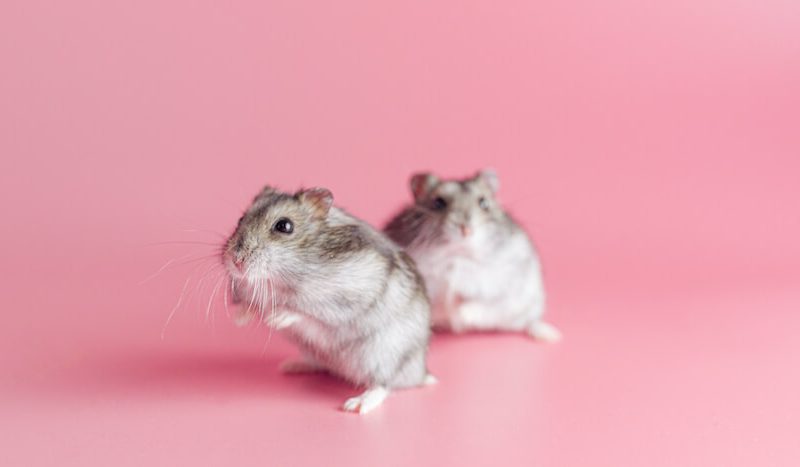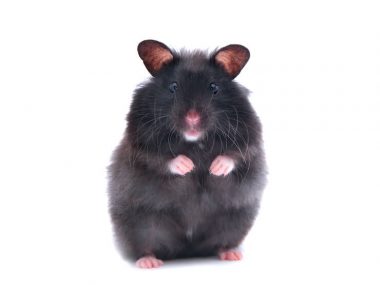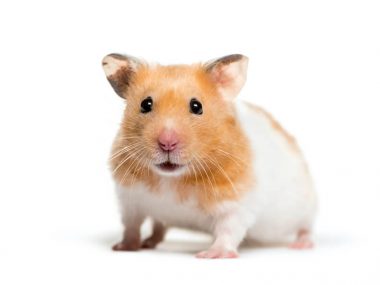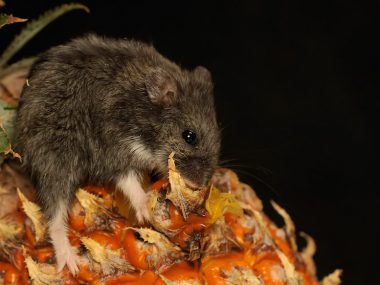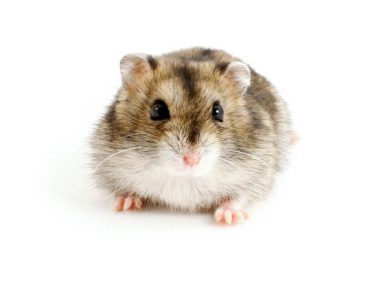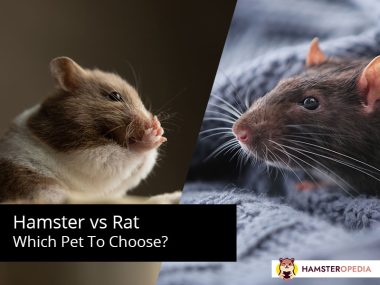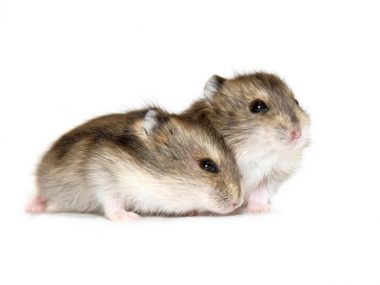Okay, apartment dwellers and hamster lovers, we have a special treat for you. How about a compact-size pet that requires little room but has a whole lot to give in love and companionship? Get to meet the dwarf hamster!
Table of Contents
Dwarf Hamster Species
If you are entertaining the idea of getting a dwarf hamster, you have come to the right place! Knowing how to care for a dwarf hamster and how to tame a dwarf hamster are a few things to have in place in your knowledge base before getting one. We have outlined each of the dwarf hamster species to give you an idea of what each brings to the table in personality and as a pet.
Roborovski Dwarf Hamster
Roborovski Dwarfs (also known as Robos) are cute as a button and are the smallest of all hamster species. You can fit about 3-4 of these dwarfs in the palm of your hand. There’s no mistaking a Robo because of its white underside and sandy back and head.
These little guys have been traced as far back as 1 million years, originating in the Zaisan Basin in Kazakhstan. Through migration, Robos spread to other regions where conditions are arid and dry.
Roborovski Dwarf Hamster At A Glance
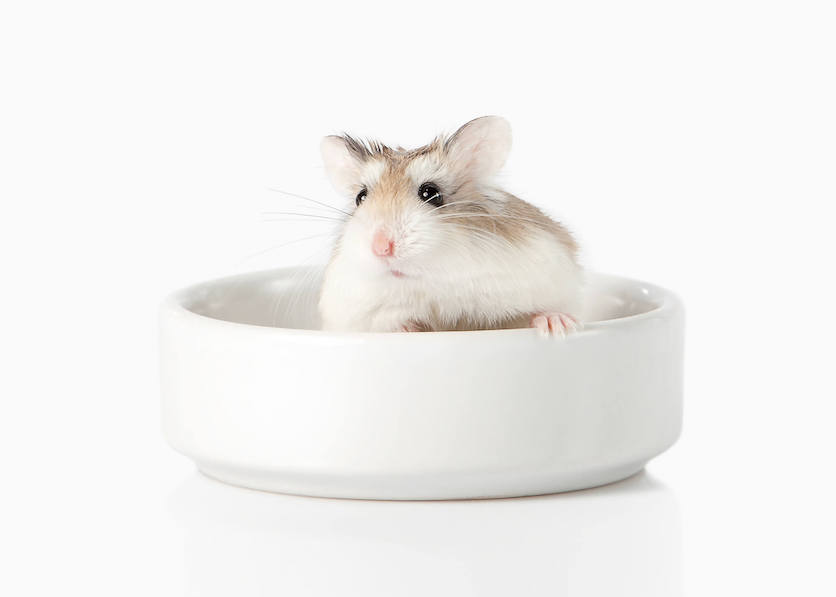
- Taxonomy – Phodopus roborovskii
- Origin – Tibet, Mongolia, Kazakhstan, Northern China
- Lifespan – 19-40 months
- Physical Attributes – Roborovski dwarf hamsters come in various colors (cream, cinnamon, sandy, white) with dominant or roan patterns. Not only are they cute, but their little faces feature black or red eyes and may or may not have crescent markings on their cheeks.
- Size – 2-3”
- Behavior/Temperament – Predisposed for hypervigilance, skittish, highly energetic, tend to become stressed easily
- Tamability – May require a bit more time and patience to tame it.
Character and care
Robos require special handling and are not ideal as a starter pet or as a pet for small children. Handling and taming are going to require patience and diligent care because Roborovski Dwarfs are unfortunately predisposed to be overly vigilant and highly prone to stress. Pair that with their uber-energetic personality, and you have a hamster that tends to jump out of hands, run, escape, and be challenging to tame. However, once one is tamed and the owner can anticipate possible behaviors, a Robo can be a great pet.
This hamster sub-species will require cage accessories to burn off their high-level energy, so a hamster wheel or a hamster ball is a must. Tubes (tunnel system) will also satisfy its need to run, burrow, and explore. Feeding and caring for a Roborovski Dwarf is fairly straightforward as long as you provide them a good quality diet and a warm and clean environment.
Deciding whether or not to find a cagemate for your Robo should depend on several things. Some dwarfs will be accepting and do fine with another of their own kind, and then there are those that just won’t stand for it. Wild Roborovski Dwarfs are notoriously aggressive and highly territorial, and this behavior can easily rear its ugly head in a cage. The smaller the cage, the more prone a hamster is to being territorial.
If you choose to introduce another Robo, careful, constant supervision is required with the expectation that you may need to separate them and house them in separate cages.
Djungarian Dwarf Hamster: Subspecies (Campbell) And Hybrid (Winter White Russian)
Djungarian Dwarfs are often referred to by other names. It can be confusing to hear a Djungarian referred to as a “Campbell,” “Winter White,” “Russian,” or “Sunfire.” A Campbell is a subspecies of the Djungarian, whereas Winter Whites, Russians, and Sunfires are hybrids of the Djungarian. So, in essence, they are all one in the same species, according to Stephan Steinlechner, Department of Zoology, School of Veterinary Medicine, Hanover, Germany.
Djungarians (including Campbell, Winter White Russian) originate in central Asia’s Altai Mountains and the corners of nearby China, Mongolia, Russia, and Kazakhstan. They are well known for their furry footpads. Their coats are short and feature various colors (mainly gray/brown) with lighter colored undersides. The dark stripe running down their back is one of their distinguishing traits.
Djungarian Dwarf Hamster At A Glance
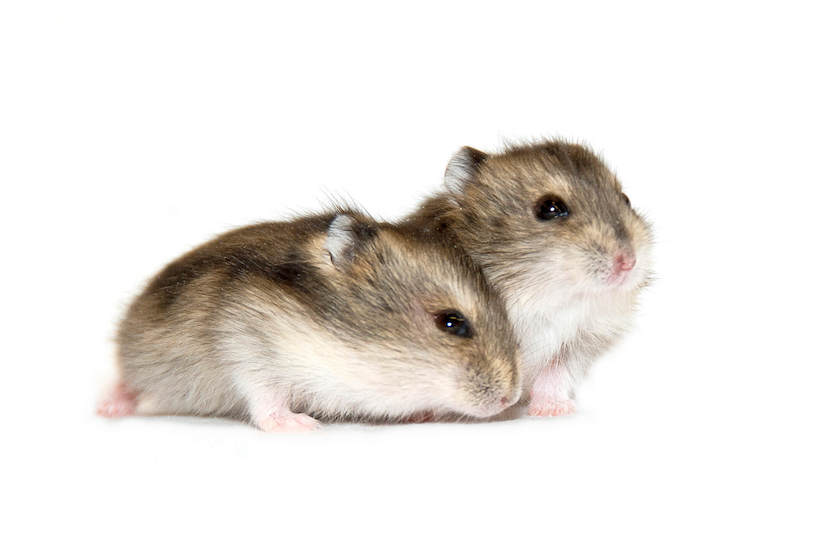
- Taxonomy – Phodopus sungorus
- Origin – Central Asia, bordering corners of Russia, Mongolia, Kazakhstan, and China
- Lifespan – 1-2 years
- Physical Attributes – The dominant color is brownish/gray with a white underside. Their eyes may be black or red. The footpads are hairy, which is one of the features that set this species apart from others.
- Size – 3-4”
- Behavior/Temperament – Moderately timid and a sense of being “on guard” at all times.
- Tamability – Ample handling is required and should be done in the right environment.
Campbell Dwarf Hamster At A Glance
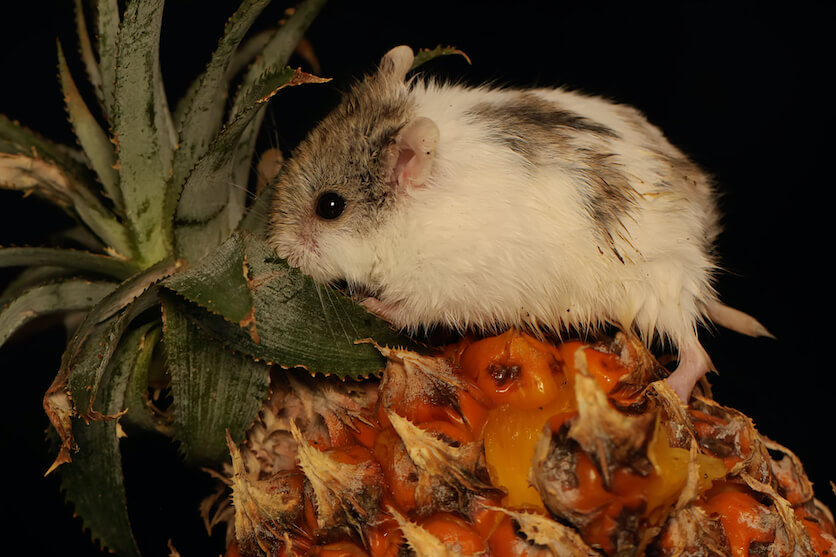
- Taxonomy – Phodopus sungorus ssp. campbellii
- Origin – Mongolia, northeast China
- Lifespan – 1-3 years
- Physical Attributes – Campbells are typically brownish colored with lighter undersides and have a dark stripe down their back.
- Size – 4″
- Behavior/Temperament – Moderately timid and a sense of being “on guard” at all times.
- Tamability – Ample handling is required and should be done in the right environment.
Winter White Russian Dwarf Hamster At A Glance

- Hybrid of Phodopus sungorus
- Origin – Mongolia, Siberia, Kazakhstan
- Lifespan – 1-2 years
- Physical Attributes – A Winter White Russian is a beautiful hamster that is short-haired with a coat coloring (gray, sapphire, pearl) that changes to white come wintertime. Their furry feet are noticeably cute.
- Size – 3-4”
- Behavior/Temperament – Moderately timid and a sense of being “on guard” at all times.
- Tamability – Ample handling is required and should be done in the right environment.
Character and care
As far as how these little hamsters go with temperament, they are deemed as moderately timid. Some refer to them as being a bit “wound up” because of their hypervigilance and intense energy. When it comes to taming a Djungarian, patience and handling them in the right environment is a must. Caring for this hamster should include a good quality diet, adequate housing, and essential cage accessories for them to burn off energy.
If you are considering this hamster as a starter pet, it may be more advantageous to select the Syrian (Golden) hamster, which is much more docile. Dwarf hamsters are not recommended as a pet for children because of the potential for dwarfs jumping and being challenging to handle when outside of the cage.
Chinese Dwarf Hamster
The Chinese Dwarf hamster is oddly very rodent-like with its long tail and similar features to that of a mouse. It is a separate species from the Phodopus genus (dwarf hamsters.) Originating in China, you’ll find these little guys mainly in the wild, where conditions are arid and desert-like. A persistent population of their wild counterparts is considered a nuisance in China’s North Plain and Mongolia.
The lineage of Chinese Dwarfs goes as far back as millions of years ago where the parentage of the species was determined to have produced the first hamster. Although their rich ancestral lines are one of this species main attractions, Chinese Dwarfs have a lot to offer in the way of a pet.
Chinese Dwarf Hamster At A Glance
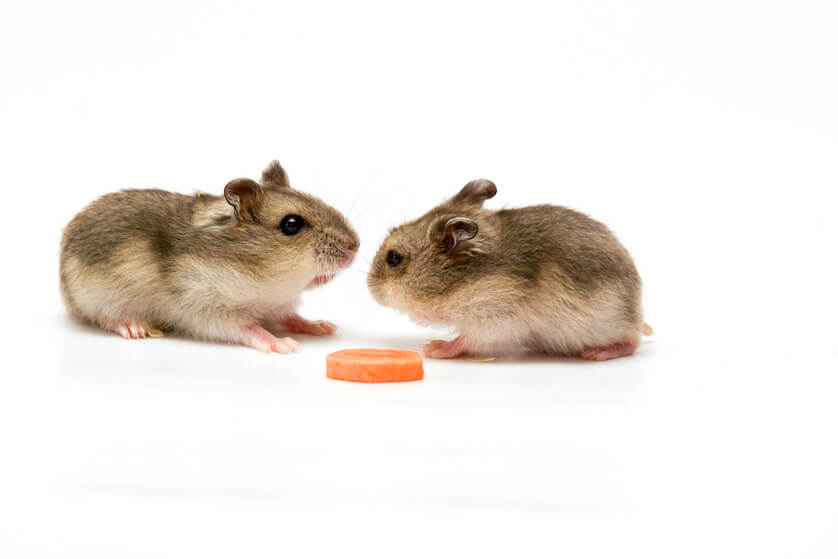
- Taxonomy – Cricetulus barabensis
- Origin – Mongolia, China
- Lifespan – 1-3 years
- Physical Features – A prominent dark stripe along the back stands out against its grayish-brown coat. It has a long tail which accounts for it often being mistaken for a mouse.
- Size – 4″
- Behavior/Temperament – Highly energetic and does best as a solitary hamster.
- Tamability – With the appropriate handling in the right environment, it can make a great pet for adults and children with supervision.
Character and Care
If you can get past the mouse-like features, you’ll grow to appreciate its grayish-brown short-hair coat and the predominant dark stripe running down its back. They are feisty and energetic and are “jumpers.” With careful handling, you may find this hamster to be sweet and enjoyable while keeping in mind it’s a ball of energy.
They don’t like to share their cage with others, so if you get a Chinese Dwarf, it will need to be a solitary hamster. Like any other dwarf, they have a lot of energy to burn off, so they’ll really appreciate having a hamster wheel and perhaps tubes to explore. Caring for a Chinese Dwarf is easier than other dwarfs. However, we don’t recommend allowing small children to handle or have access without adult supervision.
FAQs about Dwarf Hamsters
Below are common questions pet owners have about dwarf hamsters with answers to these!
Do Dwarf Hamsters Like To Be Held?
The correct answer is that they can tolerate handling. Dwarf hamsters are inherently balls of energy and tend to prefer burrowing or running on a wheel. However, if you handle your dwarf often and under the right conditions, it can become comfortable in your hands.
Do Dwarf Hamsters Get Lonely?
No, hamsters are typically solitary creatures and prefer to enjoy a cage to themselves. So it’s not the best idea to get a pair of dwarf hamsters as they might get territorial and fight over space.
Do Dwarf Hamsters Need Baths?
No, pet hamsters including dwarfs do not need bathing. However, if they start to get a bit smelly because of their scent glands, you can clean them off with a baby wipe or warm washcloth.
Do Dwarf Hamsters Bite?
Yes. Any animal that feels threatened instinctively reacts, and biting is one of those reactions. Until a hamster is accustomed to being handled, it may bite. Likewise, if you suddenly wake a sleeping dwarf hamster, it might bite.
How Much Do Dwarf Hamsters Usually Cost?
Dwarf hamsters can range in cost from $15.00 (USD) to $50.00 (USD). Some may not be as easy to find in your local pet store, so getting your dwarf hamster from a breeder may be the only option. In a case like this, the cost may be higher.
Small In Size, But Big In Personality
Dwarf hamsters are more fragile, energetic, and a bit feistier when it comes to handling. If you are looking for a more rugged hamster, the Syrian is best. Regardless of its size, a hamster will only be as good of a pet as its owner’s diligent handling and patience.
